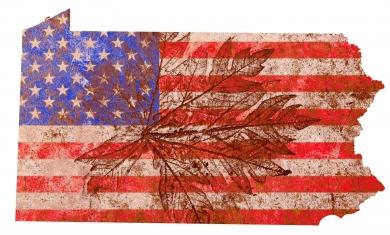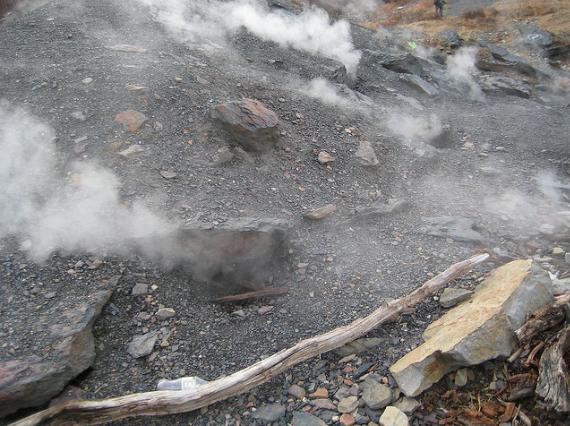[dropcap style=”font-size:100px; color:#992211;”]P[/dropcap]ennsylvania is a terrible place.
A barrier of inconvenience between the civilized east, the flatland mid-west, the rolling hills of dixie, and the endless blue lakes separating the U.S. and Canada. Most people’s only experience with Pennsylvania is crossing a few inches over it’s border to purchase fireworks.
Quakers still rule the the state with a Draconian oversight. Booze is almost impossible to buy. Liquor stores can’t sell 6-packs. And, keeping in line with it’s Christian sensitivity, students are now allowed to carry guns on state school grounds.
With all of these Taliban laws in effect it’s easy to understand how less persistent matters might be forgotten. Pennsylvania has always been a labor state. A place where people say “I pay my taxes” with pride. Where men went out in the morning with axes and shovels to “make a poor man’s dollar”. But times have been tough. The old face of American industry has changed. The packs of dirty men in a mine have been mostly replaced by fracking machines sawing off the tops of mountains. The real face of mineral extraction now has a curtain between it and the American public.
However, a sardonic anniversary just passed that reminds eastern Pennsylvania that the past can’t be completely erased.
On May 27 1962, the ground beneath Centralia, Pennsylvania lit on fire. And, as if some evil architect had constructed Centralia to sit right on top of Hell itself, the fire is still roaring under the poor town fifty-one years later. Originally a mining community, thirty years ago Centralia housed 1,000 residents. Today, with the underground fire predicted to be eternal, only ten residents remain. The Government doesn’t even pretend to offer a bright side- the Postal Service cancelled the zip-code more than a decade ago.
American Ghost Towns are hard to come by.  There are some out in the high desert, but you would need a familiar local and a motivated camel to ever find them. Even in the old rust-belt cities the poor class still hangs on. Entire towns across the country have turned up with autism and the residents still remain. Yet Centralia, less than three hours from Times Square, stands empty. The emissions break through the ground like fists of mustard gas. Even the interstate has been re-routed.
There are some out in the high desert, but you would need a familiar local and a motivated camel to ever find them. Even in the old rust-belt cities the poor class still hangs on. Entire towns across the country have turned up with autism and the residents still remain. Yet Centralia, less than three hours from Times Square, stands empty. The emissions break through the ground like fists of mustard gas. Even the interstate has been re-routed.
The cause is clear- but no one is sure how the fire started.
The most popular theory posits that volunteer firefighters are responsible. Each year the firefighters lit the town dump on fire to clear room. In 1962, it was reported that the fire wasn’t completely put out. They fire may have entered a mine hole.
[quote]They live in some
post-apocalyptic void
that looks more
like Chernobyl than
the United States[/quote]
The second theory says a trash compactor dumped hot ash in to the mine. Joan Quigley, author of The Day the Earth Caved In, a novel about Centralia, is the granddaughter of a Centralia miner. Her novel supports the second theory. It also points fingers at corruption and dirty deals.
A third theory argues that the Centralia fire was just the continuation of a fire that started in a mine two miles south of Centralia in Ashland, PA. In a New York Times article from 1890 the fire is described as having been “burning for several months … where it could not be reached”. This was the Bast Collier mine, and according to David DeKok’s book, Fire Underground, the fire was “never fully extinguished”, and “reached the landfill area (Centralia) in 1962”.
While Centralia might seem an extreme example of bad luck and the danger of coal mining, somehow, it’s not. The Office of Surface Mining Reclamation and Enforcement, a fringe of the U.S. Department of Interior, says 14 states currently have over 200 underground fires burning right now. And if you’re standing in another country shaking your head at this horrifying news, be careful where you step. National Geographic states, “thousands of coal fires rage on every continent”.
Only Antarctica can guarantee no oven has been ignited under it’s soil.
The Government bought out most of the residents of Centralia in the 80s. After they’d already inhaled whatever the earth was burping up for almost three decades. The median income of the town was $9,000 at that point so it’s hard to imagine the government offered them an early retirement.
About 10 residents currently remain. They live in some post-apocalyptic void that looks more like Chernobyl than the United States. Their reason for staying? A billion dollars of coal exists under their town. They’re convinced someone is trying to get them out to access it. Those who have stayed maintain a certain pride in their resilience. A resident named Tom Hynoski, who makes up 10% of the town’s population, has stated, “nobody here wants a penny. We just want to be left alone”.
With the worldwide demand for coal always on the rise and most of Centralia’s population over fifty, the hell under their feet would probably freeze over before Tom Hynoski and the nine others living in Centralia got their wish.
Flag Image: Freedigitalphotos.net/koratmember
Photos by Travis Goodspeed
Scott Laudati lives in New York with his Boxer, Satine. His collection of poems “Hawaiian Shirts in the Electric Chair” has been published by Kuboa Press. Visit www.ScottLaudati.com for less professionalism and angrier essays.





















Is there a point to this article? I mean other than being an opportunity for the author to string together a crazed series of half lucid and inaccurate metaphors?
What?! We need an opportunity for that?
What exactly does an *accurate* metaphor look like, by the way? ‘The sky was a mass of loosely-mixed chemicals bound to the earth by the force of gravity’, ‘The liquid-filled big ocean’, ‘She walked with the gait of one propelling herself bipedally’.
I think william thomas has stock in big coal
Centralia partially inspired the video game series Silent Hill, no? I can definitely see how that would be a good horror premise based on your description here. I’m sad for the residents and what happened to their town, but at the same time, I’d love to be able to walk around there someday. Absorb the creepiness. Or maybe that’s just the typical response of a horror writer. Interesting stuff, Scott. Cheers!